
Cisthene is a genus of lichen moths in the family Erebidae. The genus was erected by Francis Walker in 1854.
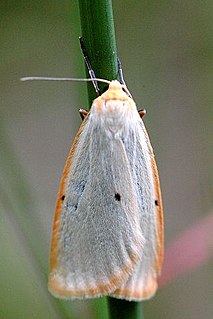
Cybosia is a monotypic moth genus in the subfamily Arctiinae erected by Jacob Hübner in 1819. Its only species, Cybosia mesomella, the four-dotted footman, was first described by Carl Linnaeus in his 1758 10th edition of Systema Naturae.
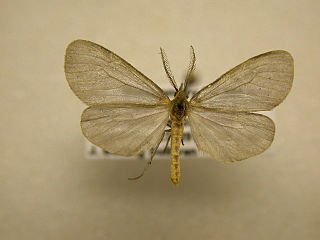
Pagara is a monotypic moth genus in the family Erebidae. Its only species, Pagara simplex, the mouse-colored lichen moth, is found in North America, where it has been recorded from Alabama, Arkansas, Florida, Georgia, Illinois, Indiana, Iowa, Kansas, Kentucky, Maryland, Mississippi, New Hampshire, North Carolina, Ohio, Oklahoma, South Carolina and Tennessee. Both the genus and species were described by Francis Walker in 1856.

Hypoprepia miniata, the scarlet-winged lichen moth or scarlet lichen moth, is a moth of the family Erebidae. The species was first described by William Kirby in 1837. It is found from British Columbia south through the western side of the Rocky Mountains to Arizona and Texas. It is also found throughout eastern North America.

Haploa reversa, the reversed haploa, is a moth of the family Erebidae. The species was first described by Stretch in 1885. It is found in North America, from south-eastern Illinois, Iowa, Kansas, New York, Oklahoma and Wisconsin.
Cisthene coronado is a moth of the family Erebidae first described by Carroll B. Knowlton in 1967. It is found in the US state of Arizona.
Cisthene martini, or Martin's lichen moth, is a moth of the family Erebidae first described by Carroll B. Knowlton in 1967. It is found in the US states of Arizona, New Mexico and Texas.

Cisthene angelus, the angel lichen moth, is a moth of the family Erebidae. It was described by Harrison Gray Dyar Jr. in 1904. It is found in North America, where it has been recorded from southern Nevada and Utah south to southern Arizona and western Texas.
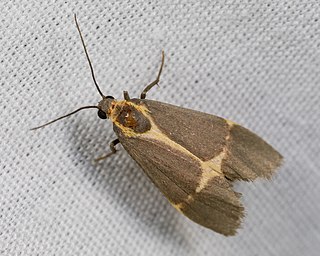
Cisthene barnesii, or Barnes' lichen moth, is a moth of the family Erebidae. It was described by Harrison Gray Dyar Jr. in 1904. It is found in the US Rocky Mountain region, from southern Montana and western North Dakota to the border with Mexico in Arizona and New Mexico. The habitat consists of dry bunchgrass steppe.
Cisthene conjuncta, the white-streaked lichen moth, is a moth of the family Erebidae. It was described by William Barnes and James Halliday McDunnough in 1913. It is found in southern Texas.
Cisthene deserta is a moth of the family Erebidae. It was described by Felder in 1868. It is found in North America, where it has been recorded from Utah and California.
Cisthene juanita is a moth of the family Erebidae. It was described by William Barnes and Foster Hendrickson Benjamin in 1925 and is found in the United States in southern Arizona.

Cisthene kentuckiensis, the Kentucky lichen moth, is a moth of the family Erebidae. It was described by Harrison Gray Dyar Jr. in 1904. It is found in the United States from New Jersey south to northern Florida, and west to Missouri, Oklahoma, and Texas.

Cisthene packardii, or Packard's lichen moth, is a moth of the family Erebidae. It was described by Augustus Radcliffe Grote in 1863. It is found in the US from the states of New York to Florida and from Missouri to Texas. The habitat consists of barrens and dry oak woodlands in the northern part of the range and a variety of woodlands and scrubs in the south.
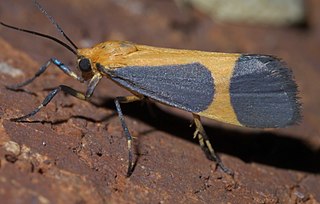
Cisthene picta, the pictured lichen moth, is a moth of the family Erebidae. It was described by William Barnes and James Halliday McDunnough in 1918. It is found in the United States from Texas to Arizona. The habitat consists of deserts.
Cisthene striata, the striated lichen moth, is a moth of the family Erebidae. It was described by Rodrigues Ottolengui in 1898. It is found in the US states of Maryland, Colorado, Georgia and Florida.
Cisthene subrufa, the Tamaulipan lichen moth, is a moth of the family Erebidae. It was described by William Barnes and James Halliday McDunnough in 1913. It is found in the United States in Arizona and from San Benito, Texas south to Veracruz in Mexico.
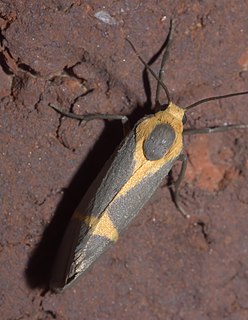
Cisthene tenuifascia, the thin-banded lichen moth or three-banded lichen moth, is a moth of the family Erebidae. It was described by Leon F. Harvey in 1875. It is found in Mexico and from Arizona to Florida, North Carolina and Oklahoma. Strays can be found further north.
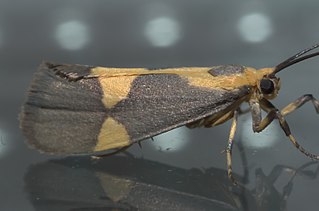
Cisthene unifascia is a moth of the family Erebidae. It was described by Augustus Radcliffe Grote and Coleman Townsend Robinson in 1868. It is found in the southern United States and Mexico.













